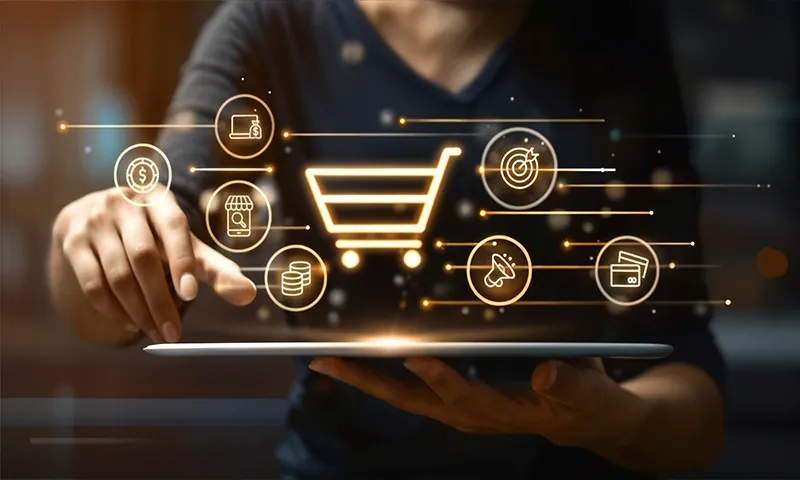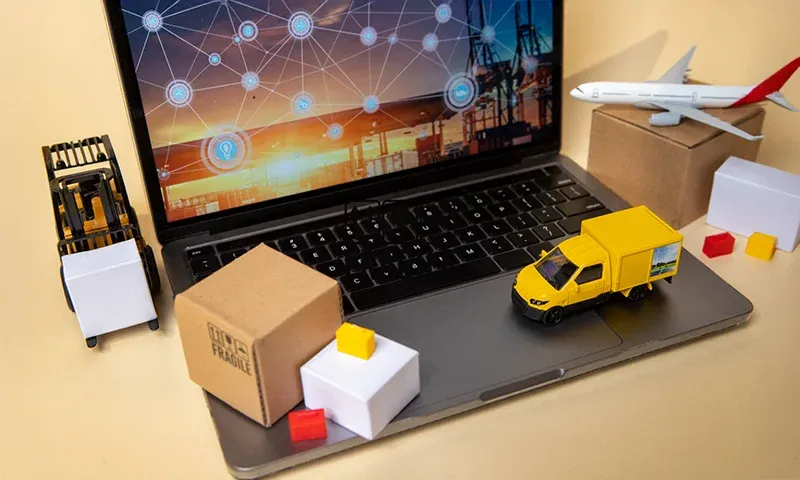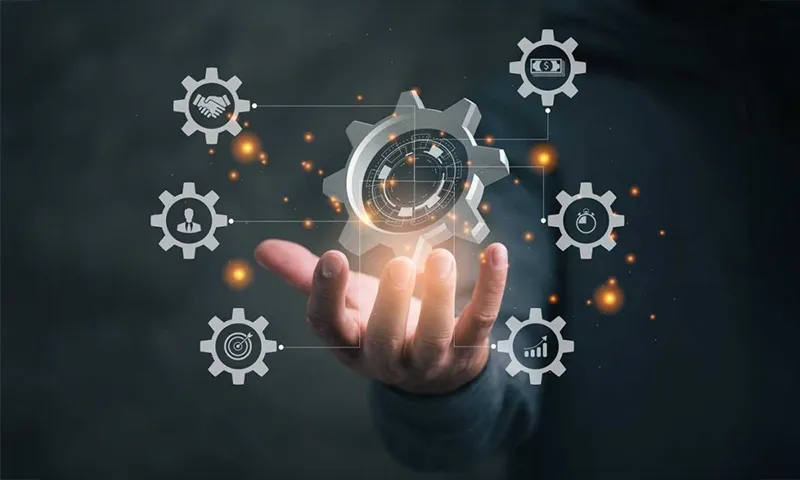How Enterprise Commerce Management Systems Can Transform Your Omnichannel Strategy
The shopping mode has been changed forever. They demand seamlessness and friction lessness through a sequence of touchpoints - web, store, or mobile.

The shopping mode has been changed forever. They demand seamlessness and friction lessness through a sequence of touchpoints - web, store, or mobile. Those who are responsible for making this happen receive more sales, more satisfied customers, and more engagement. Others will lose the loyalty of their customers.
Amongst the strongest facilitators to this seamless experience is an Enterprise Commerce Management System or ECM. By integrating the sales channels, customer data, and back-office processes, an ECM makes enterprises empowered to become capable of a consistent and personalized omnichannel experience. In this blog, let us see the extent to which ECM systems are transforming omnichannel commerce and why today's businesses cannot live without them anymore.
An Enterprise Commerce Management System, or an ECM, is a set of smart tools and technologies implemented with the very specific purpose of helping business houses streamline and consolidate both online and offline commerce activities together from a single location. An ECM is typically used to consolidate e-commerce, order management, inventory, price management, promotion, customer information, and so on into numerous such functions—all from all sales channels.
In simple straightforward terms, an ECM offers the following to businesses:
- Store and maintain product catalogs and inventory
- Manage channel price and promotion
- Combine sales and customer touch points (web, mobile, shop, marketplaces)
- Track order from buy-through to delivery back again
- Supply real-time facts and insight to facilitate decision making
Every ECM solution will probably be different from the last, but ultimately is meant to provide customers and business alike one smooth and clean experience.
Today's customers are more plugged in than ever, and so are their expectations. They ought to be able to shop anywhere, everywhere, on any device. If they come to your site on a desktop, shop from an app on their phone, or stop by a store, they should have the same product information, personalized offers, and seamless transactions.
The following are the reasons why it is critical to prioritize a successful omnichannel program:
1. Rising Customer Expectations
Customers will not tolerate fragmented experiences anymore. A survey conducted by Harvard Business Review of customers identified that 73% of customers buy a product from multiple channels. If your company is on different systems for offline and online channels, customers will see varying prices, stockouts, or maddening experiences—ending in cart abandonment and lost sales.
2. Customer Loyalty Enhanced
Omnichannel, seamless, builds customer trust and loyalty. Customer interaction with several touchpoints from brands will yield repeat buys more often. Omnichannel customers spend 13-18% more than single-channel customers, research has found. One, single experience with personalized content builds stronger customer connections and builds a return visit.
3. Competitive Advantage
With more companies embracing e-commerce, businesses that are omnichannel-capable thrive in an over-saturated market. With the same experience, companies can outperform their competitors and enjoy more advantages of the increased number of consumers searching for a smooth experience.
All successful omnichannel strategies begin with an ECM system. Let's take a look at how it can transform the very fabric of your business processes and help you deliver a single customer experience across all channels.
1. Single Product Catalog Across All Channels
The biggest challenge of omnichannel retailing, maybe, is maintaining correct real-time product data in every channel of sale. Old information such as outdated priced stock, old inventory, or incorrect data will lead to second-best customer experience and lost revenues.
An ECM prevents this problem by bringing your product inventory under one roof. Since product data is in a single system, it is ensured that customers see the same prices, descriptions, images, and quantities when they purchase online, in-store, or through a mobile application.
How it works:
Centralized database: Centralized ECM system has all the product data at the center and sends it across on all the channels and keeps everything in sync.
Real-time update: The moment that an update to a product is completed—i.e., a new promotion or price—it's updated simultaneously across all touchpoints in real time, so all touchpoints are in sync.
This across-channel integration makes the customers' satisfaction greater as well as logical in a sense by eliminating human judgment and errors.
2. Integrated Across-Channel Order Management
The customers do not mind where they buy goods if it is easy and convenient. An across-channel order management capability within an ECM allows businesses to manage and process orders across many channels easily.
No matter if the customer is purchasing in-store with pickup (BOPIS), purchasing through the mobile app, or purchasing in-store, order data all funnel into a single system.
How it works:
- Multichannel order fulfillment: Orders are fulfilled and processed anywhere, whether in a third-party vendor, warehouse, or store.
- Real-time tracking: Customers are being supplied with real-time updates about the status of their order, delivery and shipping, regardless of where the purchase took place.
Doing so helps lower customer journey friction and makes orders get processed right and properly—wherever and whenever they were purchased.
3. Personalized Customer Experience
The new customer wants a personalized experience in shopping. A well-positioned ECM system can offer a personalized offer, product recommendation, and customized promotion to a customer based on his interest and behavior.
With customer touch information from multiple places (store, web, app, etc.), an ECM can enable a company to provide the consumer with a personalized shopper experience. Personalization is the cost of conversion saving but saves customers quicker and makes them loyal too.
How it works:
Data integration: an ECM aggregates customer information from a highly heterogeneously dispersed group of sources (web behavior, social sites, buying habits, etc.) to enable better recommendations and promotions.
Personalized marketing: message and promotion can be tailored to target an individual or at least part of the consumer base more likely to be converted.
4. Real-Time Inventory Management
A proper real-time inventory management is required in today's multi-channel setting. Segmentary inventory systems cause overselling, stockout, and fill delay that drain customer experience and disinvest revenues.
All the quantities in all the channels have real-time visibility in an ECM to facilitate the management of inventory in all the channels so that companies will not overstock and understock products.
How it works:
- Centralized visibility of the stock: The ECM system offers end-to-end visibility of the stock irrespective of products' location in a physical store, warehouse, or even in transit.
- Dynamic real-time inventory updating: While the stock keeps changing through online buying, back-end transaction returns, or retail end-of-transaction buying, the ECM system real-time updates the inventory in each point of sale.
Improved inventory management will enable companies to make their supply chain more efficient, cut costs, and increase customer satisfaction.
5. Smooth Return Process and Customer Service
The other excellent ECM system makes the customer service and return process smooth too at the heart of omnichannel, where customers almost always anticipate smooth return and exchange no matter how and where they had originally made a purchase.
Through its addition of the process of returns, companies make it more convenient for shoppers. For instance, a shopper purchases an item on the Internet and returns it at a local store, or purchases at the store and returns via mail. These are channeled through the ECM system and are more convenient to customer service staff as well as the consumer.
How it works:
- Integrated returns management: The return is tracked and processed from one platform, and all the channels are processed and handled similarly.
- Multiple return channels: There are a number of different return channels (shop, by post, to a local partner) to choose from, more convenient and more satisfactory.
Conclusion: Empowering Your Omnichannel Solution with ECM
The retail future lies in an omnichannel experience that is seamless and unified with which shoppers enjoy an accurate, personal, and hassle-free shopping experience through touchpoints. One of the support pillars for such a revolution includes an Enterprise Commerce Management System by which companies are provided with the capability of integrating product catalog, real-time order management and inventory, personalization of customers, and workflow automation across channels.
By utilizing an ECM solution, not only does a business gain better customer service, but it also gains significant operational effectiveness. From accelerating sales and customer satisfaction to automating inventory and lowering costs, an ECM solution has the technology and functionality to succeed in today's competitive omnichannel marketplace.
While as much as customers' demands increase, only those companies that can provide a basic and customized shopping experience will remain successful. It is the right time to experience the full power of an ECM system and reinvent your tomorrow omnichannel strategy.







